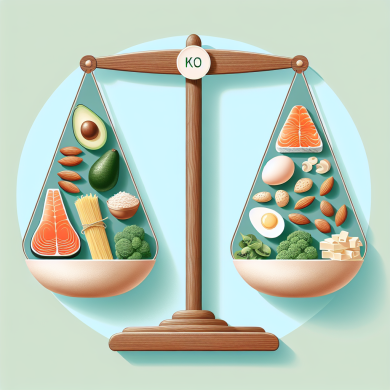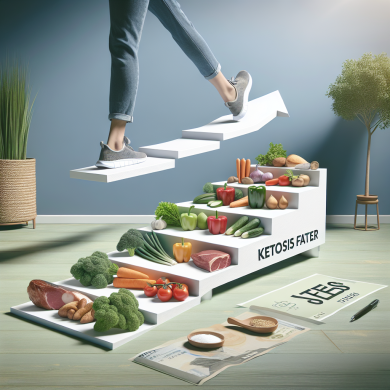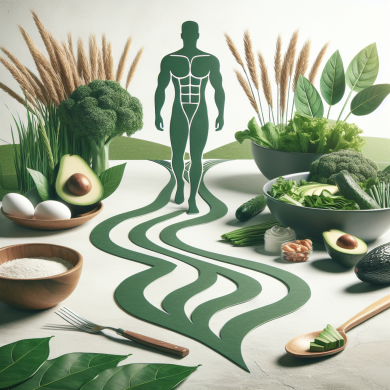Ultimate Guide to Vegetarian Keto Diet
Introduction to the Vegetarian Keto Diet
The ketogenic diet, commonly known as the keto diet, is a high-fat, low-carbohydrate dietary strategy that has gained immense popularity for its potential weight loss and health benefits. Meanwhile, vegetarianism focuses on plant-based eating, avoiding meat and sometimes other animal products. Combining these two dietary approaches into a vegetarian keto diet can be challenging due to the reliance on animal products for protein and fat in the traditional keto diet. However, with careful planning, it’s possible to follow a vegetarian keto diet that is nutritious, satisfying, and effective.
Understanding the Basics of Keto
The keto diet works by drastically reducing carbohydrate intake and replacing it with fat. This reduction in carbohydrates puts your body into a metabolic state called ketosis, where fat, instead of carbohydrates, becomes the primary energy source. In ketosis, the body becomes highly efficient at burning fat for energy, which can lead to weight loss and other health benefits.
Ketosis and Its Benefits
– **Weight Loss**: When in ketosis, the body burns stored fat for energy, which can lead to significant weight loss.
– **Improved Mental Clarity**: Many people report enhanced mental focus and clarity on a keto diet.
– **Blood Sugar Control**: By reducing carb intake, the keto diet can help stabilize blood sugar levels, which is beneficial for individuals with diabetes or insulin resistance.
Challenges of Combining Vegetarianism with Keto
The primary challenge of a vegetarian keto diet is ensuring adequate protein intake while maintaining ketosis. Traditional keto sources of protein, like meat and fish, are off the table. Vegetarians also need to find high-fat, low-carb food sources that fulfill both dietary needs without compromising nutritional balance.
Key Components of a Vegetarian Keto Diet
1. Protein Sources
– **Eggs**: A versatile and nutrient-dense food, eggs are an excellent source of protein and healthy fats.
– **Dairy Products**: Cheese, yogurt, and cream provide protein and fat but choose full-fat versions to maintain ketosis.
– **Nuts and Seeds**: Almonds, chia seeds, and hemp seeds are great for protein and healthy fats.
– **Plant-Based Protein**: Tofu and tempeh are soy-based proteins that can be incorporated into a vegetarian keto diet.
2. Fat Sources
– **Avocados**: High in healthy fats and low in carbs, avocados are a staple in a vegetarian keto diet.
– **Coconut Oil**: A good source of medium-chain triglycerides (MCTs), which can aid in maintaining ketosis.
– **Olive Oil**: Rich in monounsaturated fats, olive oil is great for cooking and dressing salads.
– **Nuts and Seeds**: In addition to protein, nuts and seeds provide healthy fats essential for ketosis.
3. Low-Carb Vegetables
– **Leafy Greens**: Spinach, kale, and arugula are low in carbs and high in nutrients.
– **Cruciferous Vegetables**: Broccoli, cauliflower, and Brussels sprouts add variety and nutrition.
– **Zucchini and Squash**: These vegetables can be used as bases for many keto-friendly dishes.
4. Supplements
– **Electrolytes**: Maintaining electrolyte balance is crucial on a keto diet. Consider supplementing with magnesium, potassium, and sodium.
– **Omega-3 Fatty Acids**: If not consuming fish, consider an omega-3 supplement derived from algae.
– **Vitamin B12**: Essential for vegetarians, as it’s primarily found in animal products.
Meal Planning and Recipes
Planning meals in advance is key to successfully following a vegetarian keto diet. Here are some ideas for breakfast, lunch, and dinner:
Breakfast
– **Avocado & Egg Breakfast Bowl**: Combine sliced avocado, poached eggs, and a sprinkle of chia seeds.
– **Keto Smoothie**: Blend spinach, unsweetened almond milk, a scoop of protein powder, and a tablespoon of almond butter.
Lunch
– **Zucchini Noodles with Pesto and Tofu**: Spiralize zucchini and toss it with homemade pesto and grilled tofu.
– **Cauliflower Rice Stir-Fry**: Sauté cauliflower rice with a mix of vegetables and scrambled eggs.
Dinner
– **Eggplant Lasagna**: Use slices of eggplant instead of pasta, layered with ricotta cheese and marinara sauce.
– **Stuffed Bell Peppers**: Fill bell peppers with a mixture of quinoa, spinach, and cheese.
Tips for Success on a Vegetarian Keto Diet
1. Plan Your Meals
Planning your meals in advance helps ensure you maintain the right balance of macronutrients and prevents last-minute decisions that might lead to carb-heavy meals.
2. Monitor Your Carb Intake
Keeping track of your carbohydrate intake is crucial for staying in ketosis. Use apps or food diaries to log your meals and snacks.
3. Stay Hydrated
Proper hydration is important on any diet. Drink plenty of water and consider herbal teas or broth for added electrolytes.
4. Be Mindful of Hidden Carbs
Read labels carefully to avoid foods with hidden sugars or starches that could disrupt ketosis.
Potential Pitfalls and How to Avoid Them
1. Nutrient Deficiency
– **Solution**: Ensure a wide variety of vegetables and consider supplementation for nutrients like B12, iron, and omega-3s.
2. Social and Dining Challenges
– **Solution**: Inform friends and family about your dietary choices and research restaurant menus in advance.
3. Initial Side Effects
– **Solution**: Gradually transition into the diet and consider increasing salt and electrolyte intake to combat the “keto flu.”
Conclusion
The vegetarian keto diet can be a rewarding and effective way to achieve weight loss and health goals while adhering to a plant-based lifestyle. By focusing on high-fat, low-carb, and protein-rich foods, vegetarians can maintain ketosis without compromising their dietary principles. As with any diet, it’s essential to listen to your body and make adjustments as needed. With dedication and planning, the vegetarian keto diet can be a sustainable and enjoyable way to nourish your body and mind.















Add comment